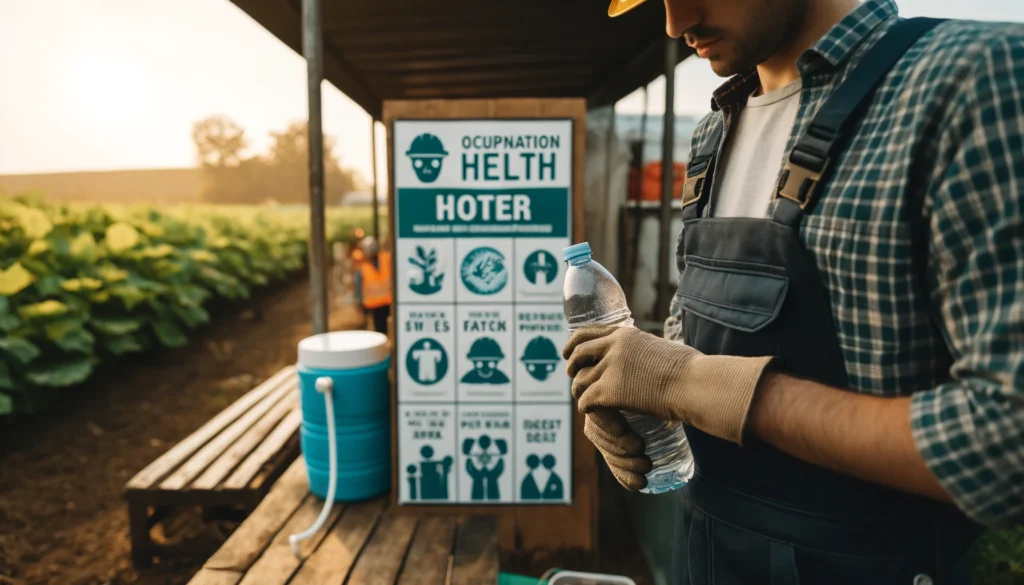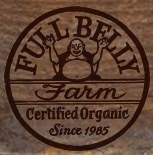
Agriculture Dictionary A close up shot showcasing occupational health measures on a farm. The focus is on a farmers hands holding a water bottle with a water cooler and sh2.webp.webp
Definition: Occupational Health
Occupational health refers to the promotion and maintenance of the highest degree of physical, mental, and social well-being of workers in all occupations. It involves the prevention and control of workplace hazards and the protection of workers from risks to their health and safety. In agriculture, occupational health encompasses practices and measures designed to safeguard the health of farmers and farm workers, addressing issues such as exposure to chemicals, ergonomic risks, physical injuries, and mental health challenges. Ensuring occupational health is crucial for enhancing productivity, reducing absenteeism, and fostering a sustainable working environment.
Occupational Health: An In-Depth Guide
Introduction
Occupational health is a critical aspect of maintaining a productive and sustainable agricultural workforce. This guide explores the various components of occupational health, their benefits, and best practices for implementation in farming environments. Understanding these measures can help farmers create a safer and healthier working environment, ultimately improving overall farm productivity.
Fall off the barn roof and busted your keister? Life on the farm or ranch can be tough on the bum. Need a break? Laugh it off at FarmerCowboy.com, the #1 farm humor site. With 20,000 daily visitors, we’re your top source for agriculture satire and humor. Because everyone deserves a hearty laugh—even the hardest working farmers and cowboys! Join us and turn those long days into fun tales at FarmerCowboy.com.
Key Components of Occupational Health
Occupational health in agriculture involves several key components that address different health and safety aspects of farm work:
1. Chemical Safety
Farm workers are often exposed to various chemicals, including pesticides, herbicides, and fertilizers. Ensuring chemical safety involves:
- Proper Handling: Using appropriate personal protective equipment (PPE) and following safe handling procedures.
- Storage: Storing chemicals in well-ventilated, secure areas away from living spaces.
- Training: Educating workers on the risks associated with chemicals and safe usage practices.
- Emergency Procedures: Having protocols in place for dealing with chemical spills and exposures.
2. Ergonomics
Ergonomic practices help prevent musculoskeletal disorders caused by repetitive tasks and poor posture. Key practices include:
- Workstation Design: Designing workstations to minimize strain and improve comfort.
- Tool Use: Using tools and equipment that reduce physical effort and improve efficiency.
- Training: Teaching workers proper lifting techniques and body mechanics.
3. Physical Safety
Physical safety measures protect workers from injuries related to machinery, animals, and environmental hazards. Important measures include:
- Machinery Safety: Ensuring all machinery is well-maintained and equipped with safety features.
- Protective Gear: Providing and enforcing the use of PPE such as gloves, helmets, and safety glasses.
- Safe Work Practices: Implementing protocols for safely handling animals and operating machinery.
4. Mental Health
Mental health is an often-overlooked aspect of occupational health but is crucial for overall well-being. Support measures include:
- Stress Management: Providing resources and training on stress management techniques.
- Work-Life Balance: Encouraging a healthy work-life balance to prevent burnout.
- Support Services: Offering access to mental health services and support networks.
5. Health Monitoring and Screening
Regular health monitoring and screening can detect early signs of work-related health issues. Practices include:
- Medical Exams: Conducting regular health check-ups and screenings for common occupational illnesses.
- Health Surveillance: Monitoring the health status of workers exposed to specific risks, such as chemicals.
- Vaccinations: Providing vaccinations for diseases common in agricultural settings, such as tetanus and influenza.
Benefits of Occupational Health
Implementing comprehensive occupational health measures offers numerous benefits:
- Improved Productivity: Healthy workers are more productive and can perform their tasks more efficiently.
- Reduced Absenteeism: Effective health and safety measures reduce the incidence of work-related illnesses and injuries, leading to fewer absences.
- Enhanced Worker Morale: A safe and healthy work environment boosts worker morale and job satisfaction.
- Cost Savings: Preventing illnesses and injuries reduces medical costs, workers’ compensation claims, and lost workdays.
- Compliance with Regulations: Adhering to occupational health regulations helps avoid legal penalties and ensures the farm operates within legal requirements.
Best Practices for Occupational Health
To maximize the benefits of occupational health, consider the following best practices:
1. Conduct Risk Assessments
Regularly assess workplace risks to identify potential hazards and implement appropriate control measures. This includes evaluating chemical exposures, ergonomic risks, and physical safety hazards.
2. Provide Comprehensive Training
Ensure all workers receive training on occupational health and safety practices, including the safe use of chemicals, ergonomic techniques, and mental health awareness.
3. Promote a Health and Safety Culture
Foster a culture that prioritizes health and safety by encouraging open communication about health concerns and involving workers in health and safety planning.
4. Implement Health Surveillance Programs
Establish health surveillance programs to monitor the health of workers exposed to specific risks. This includes regular medical exams and health screenings.
5. Ensure Access to Health Services
Provide access to health services, including medical care, mental health support, and emergency response services. Ensure workers know how to access these services when needed.
Case Study: Successful Implementation of Occupational Health Measures
The Greenfield Family Farm
The Greenfield family operates a 2,000-acre crop and livestock farm. They successfully implemented comprehensive occupational health measures, leading to significant improvements in worker health and productivity. Key elements of their success included:
- Chemical Safety Training: The Greenfields provided extensive training on the safe handling and storage of chemicals, reducing exposure incidents.
- Ergonomic Workstations: Workstations were redesigned to improve ergonomics, reducing musculoskeletal disorders among workers.
- Mental Health Support: The farm offered stress management workshops and access to mental health services, improving overall well-being.
- Health Surveillance: Regular health check-ups and screenings helped detect and manage work-related health issues early.
Results
The Greenfield family’s commitment to occupational health led to a substantial reduction in work-related illnesses and injuries, increased productivity, and enhanced worker morale. Their proactive approach to health and safety also improved compliance with regulations and fostered a positive reputation within the community.
Conclusion
Occupational health is essential for the efficiency and productivity of agricultural operations. By implementing comprehensive health and safety measures, providing training, and promoting a health-focused culture, farmers can protect their workers and enhance farm productivity. Understanding the different aspects of occupational health and best practices for their implementation is crucial for maximizing the benefits and ensuring the long-term success of a farm.
How Knowledge of Occupational Health Can Help Farmers
Understanding occupational health helps farmers make informed decisions about health and safety measures, training, and protocols. Knowledge of different aspects of occupational health enables farmers to create a safe and healthy working environment, enhance productivity, and ensure compliance with regulations. This understanding also supports sustainable farming practices and long-term agricultural success.
Resources for Further Reading
To further explore occupational health and related topics, visit the following resources:

Originally posted 2024-05-24 11:05:30.
Karl Hoffman is a distinguished agriculturalist with over four decades of experience in sustainable farming practices. He holds a Ph.D. in Agronomy from Cornell University and has made significant contributions as a professor at Iowa State University. Hoffman’s groundbreaking research on integrated pest management and soil health has revolutionized modern agriculture. As a respected farm journalist, his column “Field Notes with Karl Hoffman” and his blog “The Modern Farmer” provide insightful, practical advice to a global audience. Hoffman’s work with the USDA and the United Nations FAO has enhanced food security worldwide. His awards include the USDA’s Distinguished Service Award and the World Food Prize, reflecting his profound impact on agriculture and sustainability.



